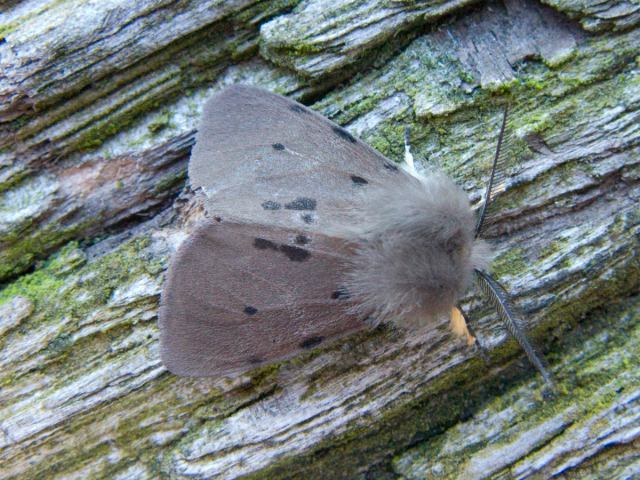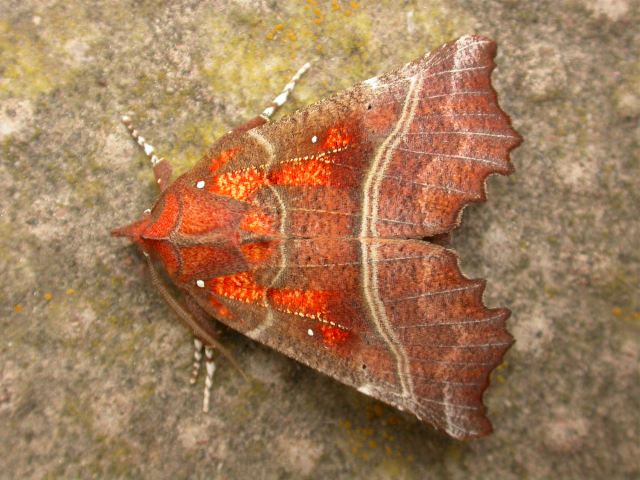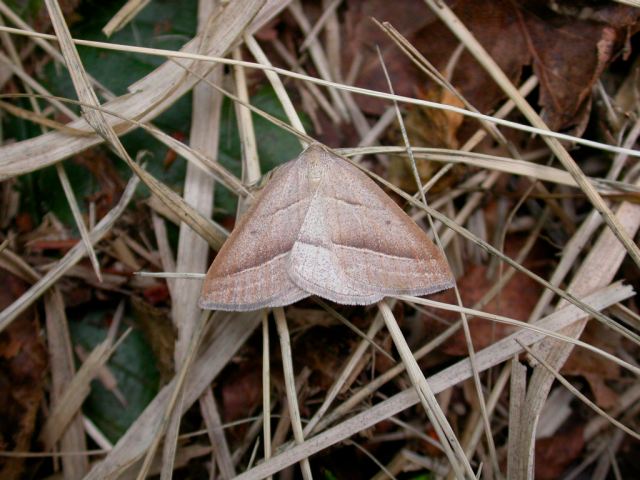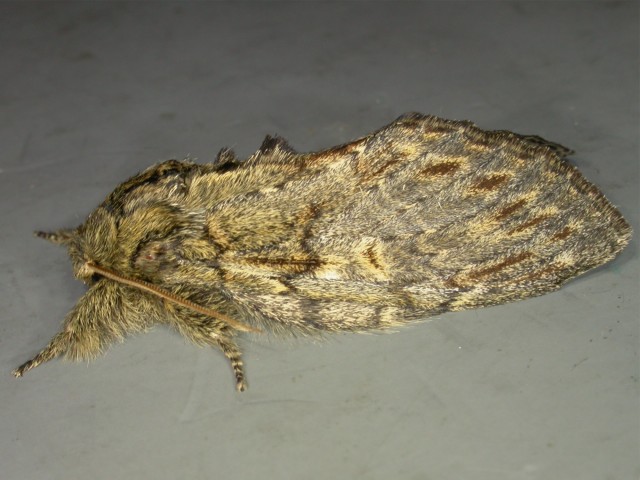Senior lepidopterists have often remarked that butterflies and moths do well after a very cold winter and the initial results of the spring so far appear to bear this out. The biological thought behind this theory is that parasitic, bacterial and fungal infestations, that in mild winters take out many eggs, dormant larvae and developing pupae are themselves greatly reduced by the cold temperatures, allowing many more of the insects to survive to the adult stage. Results from both garden and woodland moth-trapping have shown much better numbers of species such as Yellow Horned, Common Quaker and Hebrew Character than in the last couple of years, which is great news.

Common Quaker (Photo: Patrick Clement)
My own garden here in Worcester has produced a single night total of 50 Hebrew Character, which far outstrips any from the previous six years. The other perhaps not unexpected trend is that many species are perhaps a week to 10 days later in their emergence compared with recent years, hopefully swinging back towards the norm and away from some of the exceptionally early and possibly worrying appearances of many species in recent years. It will be very interesting to see how the next batch of mid-spring species do over the next four to five weeks. Because of the later spring, many of the species listed in last months article will continue to fly for a while yet.
New species to look out for at an average garden moth trap in the next month are:
- Pebble Hook-tip
- Chinese Character
- Red Twin-spot Carpet
- Garden Carpet
- Common Carpet
- Small Phoenix
- Common Marbled Carpet
- Green Carpet
- Lime-speck Pug
- V-Pug
- Oak-tree Pug
- Brimstone Moth
- Brindled Beauty
- Lime Hawk-moth
- Sallow Kitten
- Iron Prominent
- Pebble Prominent
- Lesser Swallow Prominent
- Pale Prominent
- Muslin Moth
- Ruby Tiger
- Shuttle-shaped Dart
- Flame Shoulder
- Powdered Quaker
- Mullein
- Knot Grass
- Angle Shades
- Spectacle

Pebble Hook-tip (Photo: David Howdon)

Chinese Character (Photo: Patrick Clement)

Garden Carpet (Photo: David Howdon)

Oak-tree Pug (Photo: David Howdon)

Brindled Beauty (Photo: Max Whitby)

Brimstone Moth (Photo: Andy Culshaw)

Lime Hawk-moth (Photo: Max Whitby)

Sallow Kitten (Photo: David Howdon)

Iron Prominent (Photo: Patrick Clement)

male Muslin Moth (Photo: David Howdon)

Angle Shades (Photo: Patrick Clement)
One spectacular species which may have over-wintered in garden sheds and outhouses and just re-emerging is the Herald.

Herald (Photo: Andy Culshaw)
If you are really lucky you may spot a very local species like Scarce Tissue which seems to do well in suburban areas with large growth of Barberry bushes or other cultivated Berberis. Be careful not to confuse it with The Tissue, a very similar species that flies again after winter hibernation.
Some more micro-moths which are not too difficult to identify from online photographic libraries are:
- 647 Brown House Moth
- 648 White-shouldered House Moth
- 892 Mompha subbistrigella
- 998 Light Brown Apple Moth
- 1136 Epinotia immundana

White-shouldered House Moth (Photo: Patrick Clement)

Light Brown Apple Moth (Photo: David Howdon)
Surveying in old woodland or sheltered heathland is more attractive now with better weather and plenty of time to get 'on-site' mid-week with the extra daylight hours. Try a combination of Actinic traps as well as Mercury Vapour as the former can often outperform the latter, especially if positioned in low coppice or the darker recesses of the wood.
Extra species to be expected in a wood or heathland near you:
- Emperor
- Scalloped Hook-tip
- Frosted Green
- Waved Umber
- Spruce Carpet
- May Highflyer
- Narrow-winged Pug
- Seraphim
- Scorched Carpet
- Brown Silver-line
- Barred Umber
- Purple Thorn
- Square Spot
- Grey Birch
- Puss Moth
- Swallow Prominent
- Great Prominent
- Coxcombe Prominent
- Chocolate-tip
- Orange Footman
- Least Black Arches
- Nut-tree Tussock

Scalloped Hook-tip (Photo: David Howdon)

Waved Umber (Photo: David Howdon)

Brown Silver-line (Photo: Andy Culshaw)

Purple Thorn (Photo: David Howdon)

Great Prominent (Photo: David Howdon)

Chocolate-tip (Photo: Patrick Clement)
Amongst these are some of Britain's best-loved species like the Emperor, Puss Moth and Chocolate-tip, which really do have to be seen to be believed!
Some extra micros which may be encountered are:
- 150 Adela reaumurella
- 461 Ypsololopha ustella
- 649 Esperia sulphurella
- 666 Semioscopis avellanella
- 697 Agonopterix arenella
- 986 Syndemis musculana
- 1053 Acleris hastiana
- 1334 Scoparia ambigualis

Adela reaumurella (Photo: David Howdon)

Ypsololopha ustella (Photo: Patrick Clement)

Esperia sulphurella (Photo: David Howdon)
Be careful not to miss any tiny Caloptilia species, including:
- 282 Caloptilia elongella
- 288 Caloptilia stigmatella
The numbers preceding the micro-moth names are the British Checklist Species Numbers as assigned by J. D. Bradley in Log Book of British Lepidoptera, 2000.
UKMoths online photographic guide: http://ukmoths.org.uk/
Steve Whitehouse can be contacted for further information on 01905 454541 or email stevewhitehouse123@btinternet.com

